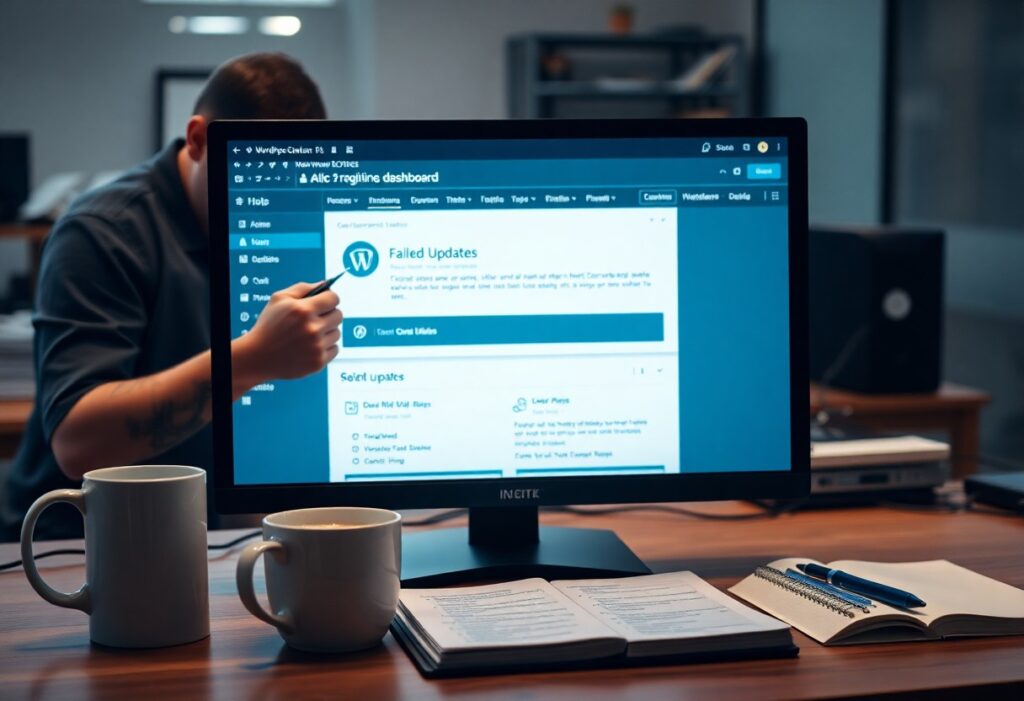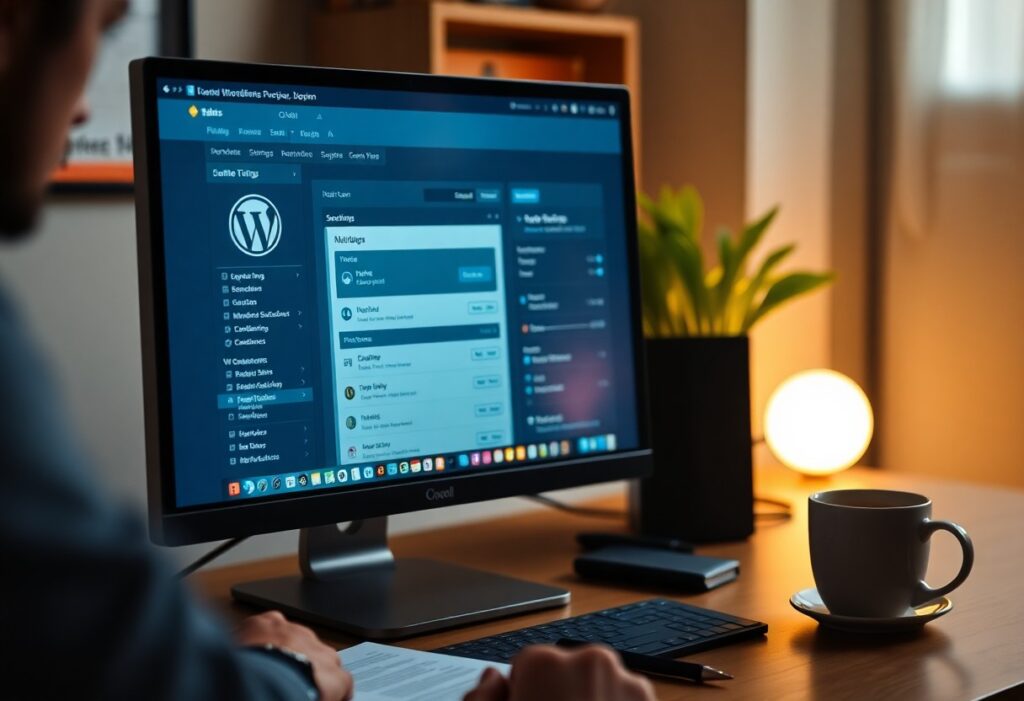This guide will empower you to make your Elementor website compliant with WCAG standards, ensuring that all users, including those with disabilities, can access your content. By implementing simple yet effective changes, you can create a more inclusive experience that not only enhances usability but also improves your site’s visibility in search engines. Follow this comprehensive step-by-step approach to boost your website’s accessibility and provide equal opportunities for every visitor navigating your digital space.
The Importance of Accessibility in Web Design
Legal Requirements and Standards
Web accessibility is not just a best practice but also a requirement under various laws and standards, including the Americans with Disabilities Act (ADA) and the Web Content Accessibility Guidelines (WCAG). Organizations found lacking in accessibility often face legal action, which can lead to substantial financial penalties and reputational damage. For instance, in recent years, lawsuits related to website accessibility have surged by over 300%, emphasizing the need for compliance. Your website should adhere to WCAG 2.1 standards, which help ensure that users with disabilities can perceive, operate, and understand your content without barriers.
Fulfilling these legal requirements not only protects your organization from potential lawsuits but also positions you as a leader in social responsibility. By integrating accessibility features into your web design, you’re championing an inclusive approach that resonates with the values of today’s society. Consider that approximately 15% of the global population experiences some form of disability; by making your site accessible, you tap into an expansive audience that might otherwise be excluded.
Enhancing User Experience for All Visitors
Implementing accessibility features directly improves the overall user experience for everyone, not just those with disabilities. For example, clear navigation, well-structured headings, and consistent layouts can benefit all users, helping them find information quickly and intuitively. A recent study showed that 88% of online consumers are less likely to return to a site after a bad experience, which demonstrates that a strong focus on accessibility can drive engagement and customer loyalty. In this digital landscape, where attention spans are shorter than ever, providing an accessible experience is both practical and strategic.
When you create an accessible website, you not only comply with regulations but also foster a welcoming environment for all visitors. Rich text alternatives for images, captions for videos, and keyboard navigation options help everyone engage with your content seamlessly. This inclusivity can lead to increased page views, longer session durations, and ultimately a higher conversion rate. The overarching benefit is clear: addressing accessibility isn’t merely an obligation; it’s a tremendous opportunity to enhance your overall site’s effectiveness and reach a broader audience.
Key Principles of WCAG Compliance
To create a website that is compliant with WCAG, it’s crucial to understand its four foundational principles: Perceivable, Operable, Understandable, and Robust. These principles provide a framework that guides you in developing a website that is accessible to all users, regardless of their abilities or the devices they use. By focusing on these aspects, you can ensure that your Elementor website is not only inclusive but also provides a seamless experience for everyone.
Perceivable: Designing for Varied Sensory Abilities
Designing for varied sensory abilities means presenting information in ways that can be easily perceived by all users. This includes providing text alternatives for images, ensuring that content is not built solely around color, and delivering audio content through text transcripts. Your goal is to create a website where no user is left behind, regardless of whether they have visual, auditory, or cognitive impairments. For instance, utilizing alt text for images allows screen readers to convey crucial information to visually impaired users. Other techniques like ensuring high contrast between text and background help individuals with low vision better navigate your site.
Additionally, using layout techniques that do not rely solely on spatial cues, such as underlining links or clearly identifying headings and sections helps those with cognitive disabilities to make sense of the content. Thoughtfully chosen font sizes and types also contribute to improve readability, making the site more welcoming for users who may struggle with traditional layouts. Overall, adopting a multi-sensory approach fosters inclusivity across your audience, enhancing their overall experience.
Operable: Navigational Ease and Functionality
Operability hinges on how easily users can navigate and interact with your website. All functionality must be accessible through both keyboard and mouse, ensuring individuals with mobility impairments can smoothly interact with your content. This includes creating clear focus states, allowing for tab navigation, and ensuring buttons on your website are large enough to be clicked effortlessly. Incorporating these elements transforms the user journey from a potential obstacle course into a straightforward pathway.
Effective navigation structures are vital. Your website needs a logical flow, allowing users to predict where they can find information. Organizing menus and links in intuitive formats will help guide users through different sections of your site. For example, implementing breadcrumb navigation can empower users to understand their location within the website hierarchy, minimizing frustration and enhancing their interaction. Offering alternatives like skip links allows users to bypass repetitive elements, streamlining their browsing experience.
Consider implementing features like a sticky navigation menu that remains visible as users scroll, ensuring they always know how to get back to key areas of your site—especially vital for users needing assistive technologies.
Understandable: Clarity in Design and Content
Clarity in both design and content ensures that users can easily comprehend and make use of your website. Language should be straightforward, avoiding jargon or complex terms that may alienate some users. Implementing consistent design layouts and navigational elements also aids in reducing the cognitive load on visitors, allowing them to focus on content rather than figuring out how to get around. Ensure forms have clear labels and instructions, so users know exactly what is required of them. This clarity fosters user confidence, enhancing their experience and likelihood of engagement.
Incorporating feedback mechanisms, such as error messages that clearly explain what went wrong and how to fix it, can assist users in completing tasks without confusion. Using headers, bullet points, and short paragraphs helps break up information, making your content more digestible. The more straightforward and intuitive your content is, the more accessible it will be to diverse audiences.
Robust: Compatibility Across Diverse Technologies
Robustness ensures that your website works across a variety of technologies, including different browsers, devices, and assistive tools. This principle guides you in writing clean, standardized code that follows established web standards. Ensuring compatibility with screen readers and other assistive technologies is vital; this can include using ARIA (Accessible Rich Internet Applications) roles and properties to enhance the accessibility of dynamic content. Testing your site across various platforms and devices will help identify any compatibility issues, ensuring a smooth experience for all users, regardless of how they access your content.
Employing semantic HTML is a best practice for enhancing robustness. Utilizing proper HTML elements (like headers, lists, and tables) creates a well-structured document that assists assistive technologies in interpreting the content correctly. This not only promotes accessibility but also improves search engine optimization, making your content discoverable to broader audiences.
Elementor-Specific Strategies for Accessibility
Utilizing Built-in Accessibility Features
Elementor offers a variety of built-in features that can enhance your website’s accessibility without needing extensive coding knowledge. For instance, the keyboard navigation option allows users who rely on keyboards instead of a mouse to navigate through your site seamlessly. Utilizing these features provides a stronger foundation for accessibility and ensures you’re equipped with tools that are designed with inclusivity in mind. Additionally, Elementor’s responsive design capabilities mean your content automatically adjusts for various screen sizes and devices, which further improves accessibility for all users.
Another significant feature is the ability to add image alt texts directly within the Elementor interface. Providing descriptive alt texts for images not only complies with WCAG standards but also aids visually impaired users who use screen readers. It’s necessary to ensure these descriptions are precise and relevant, conveying the purpose and content of the image effectively.
Customizing Widgets for Enhanced Compliance
Elementor allows you to customize widgets, which is crucial for meeting accessibility standards. By adjusting your widget settings, you can ensure text sizes, contrast ratios, and focus styles meet the WCAG 2.1 success criteria. Making adjustments in font sizes and contrast can vastly improve readability for those with visual impairments. For example, ensure that the contrast between text and background colors adheres to WCAG recommendations, such as a ratio of at least 4.5:1 for regular text.
Incorporating tools like the Accessibility Widget not only enhances user experience but can also automatically fix various accessibility issues present in your content. Utilize this feature to gain feedback on your site’s accessibility and make adjustments accordingly, allowing you to maintain compliance as your site evolves.
Implementing ARIA Roles and Landmarks
Applying ARIA (Accessible Rich Internet Applications) roles and landmarks can greatly enhance the accessibility of your Elementor website. ARIA roles inform assistive technologies about the function of an element on your page, which is particularly useful for dynamic content. For example, using ARIA roles can bridge the gap between standard HTML elements and custom elements created within Elementor, thus facilitating better user navigation. Use roles such as navigation, banner, and main to define sections clearly for screen readers.
Landmarks provide users with a way to navigate quickly through pages via screen readers, offering shortcuts that enhance user experience. Implementing these attributes not only improves accessibility but also ensures your website aligns with modern web standards. By ensuring these roles and markers are present on your widgets, you create a more intuitive browsing experience for all users.
Incorporating ARIA roles and landmarks is a straightforward way to enhance your site’s accessibility. You can edit these attributes through the widget’s advanced settings in Elementor, allowing for fine-tuned customization that meets your specific design goals while supporting compliance guidelines.
Testing Your Website for Accessibility
Validating your website’s accessibility is an ongoing commitment, not a one-time task. As a site owner, you need a clear understanding of how to measure the effectiveness of your accessibility features. Regular evaluation through comprehensive testing ensures your site meets WCAG standards and truly accommodates all users. A proactive approach includes leveraging both automated tools and the insights gathered from real users navigating your content.
Tools and Resources for Effective Evaluation
Numerous tools exist for evaluating accessibility on your Elementor website. Automated solutions like Axe and WAVE scan your site and identify potential issues, ranging from contrast errors to missing labels. These tools help expedite the process by providing initial insights, but they should not be the sole method of testing. Manual checks, such as evaluating keyboard navigability and checking for alt text on images, are equally imperative since automation may miss nuanced accessibility concerns. By combining both strategies, you can gain a more comprehensive understanding of your site’s usability.
Conducting User Testing with Diverse Audiences
Engaging a diverse group of users for testing leads to valuable insights that automated tools cannot provide. Target individuals with varying disabilities—including visual impairments, hearing issues, and cognitive disabilities—to gather authentic feedback on your site’s functionality. Conducting sessions where participants complete tasks on your site allows you to observe their interactions and identify areas of confusion or frustration. This qualitative data becomes instrumental in refining your design and content to better serve all users.
Involving individuals with disabilities might also reveal aspects of your design that you hadn’t considered. For instance, users who navigate via screen readers often have specific feedback about jargon-heavy language or missing landmarks. Their firsthand experiences can inform you on how to adjust your site to enhance clarity or streamline navigation. Incorporating such feedback not only fulfills your accessibility goals but enriches the overall user experience for everyone who visits your website.
Common Pitfalls in Accessibility Implementation
Overlooking Color Contrast and Visual Elements
Color contrast plays a critical role in making your website inclusive. Using similar colors for text and background can create a confusing experience for users, especially those with visual impairments such as color blindness. The Web Content Accessibility Guidelines (WCAG) recommend a contrast ratio of at least 4.5:1 for normal text and 3:1 for large text. Tools like the WebAIM Contrast Checker can help you analyze your color choices to ensure they meet these standards. For instance, if your website has light gray text on a white background, you may need to adjust your palette to improve visibility.
Furthermore, relying solely on color to convey information can lead to misunderstandings for some users. Always consider using text labels, patterns, or shapes alongside color to describe important elements or status indicators. A practical application of this is in forms—when indicating a valid or invalid submission, incorporating both a color cue and an icon can enhance clarity for everyone who visits your site.
Ignoring Keyboard Navigation and Focus
Many users rely on keyboard navigation to interact with web content, particularly those with mobility impairments. If your Elementor site isn’t optimized for keyboard users, you risk alienating a significant portion of your audience. All interactive elements—including buttons, links, and form fields—should be easily reachable and operable using the Tab key. Pay attention to the focus style as well, ensuring that keyboard users can see which element they are interacting with in real time.
Consider conducting a user test to see how effectively your site accommodates keyboard navigation. If a user cannot seamlessly access the menu or various sections through Tab and Enter keys, your site fails even the most basic accessibility standards. Functions like dropdowns and modal windows should have clear and predictable behaviors, so users know what to expect as they navigate through your content.
Ignoring keyboard navigation not only hampers access for people with disabilities but also detracts from the overall user experience. A well-structured site with clear focus indicators can save time and frustration, encouraging users to explore more of your content. Testing with real users who have diverse abilities provides valuable insights and can highlight any navigation barriers you may not have considered.
Final Tips for WCAG Accessibility in Elementor Websites
To wrap up, ensuring that your Elementor website meets WCAG accessibility standards is not just a compliance issue; it’s about creating an inclusive online environment for all users. By implementing best practices such as using appropriate color contrast, adding alt text to images, and ensuring navigational elements are keyboard-friendly, you can significantly enhance the user experience for those with disabilities. These considerations will not only help you avoid potential legal challenges but also broaden your audience outreach, ultimately contributing to the success of your website.
As you move forward, continuously evaluate your website’s accessibility by testing with various tools and gathering feedback from real users. Making your site accessible is not a one-time task; it requires ongoing commitment and adaptation to remain effective. By prioritizing WCAG standards in your design process, you show that you value every visitor’s experience, which can greatly enhance your brand’s reputation and foster loyalty among your audience.
FAQ
Q: What is WCAG and why is it important for my Elementor website?
A: WCAG stands for Web Content Accessibility Guidelines. These guidelines are designed to make web content more accessible to people with disabilities, including those with visual impairments, hearing impairments, and cognitive disabilities. Implementing WCAG on your Elementor website not only improves usability for all users but also ensures compliance with legal standards in many regions. This can help you avoid potential lawsuits and provide an equitable experience for all visitors.
Q: How can I ensure that my Elementor website meets the color contrast requirements of WCAG?
A: Ensuring your website meets color contrast requirements involves selecting background and text colors that provide sufficient contrast for readability. You can use online contrast checkers to verify that your color combinations meet the minimum contrast ratios specified by WCAG. For example, text should have a contrast ratio of at least 4.5:1 against its background for standard body text. In Elementor, you can adjust colors in the Style tab of your widgets, and testing your palette will enhance accessibility for users with visual impairments.
Q: What steps can I take to ensure my Elementor images are accessible?
A: To make your images accessible on an Elementor website, start by adding descriptive alternative (alt) text for each image. This alt text should clearly convey the content and purpose of the image for users who rely on screen readers. In Elementor, you can add alt text in the Image widget settings. Additionally, ensure that any informative images have captions and that your image sizes are responsive, so they work well on various devices. These practices will enhance the overall accessibility of your site and improve the user experience for everyone.



